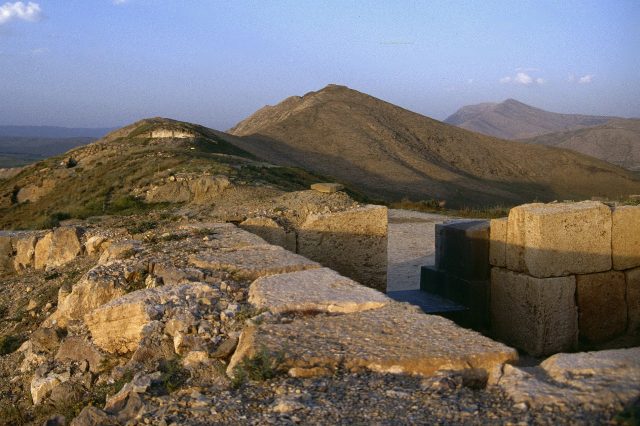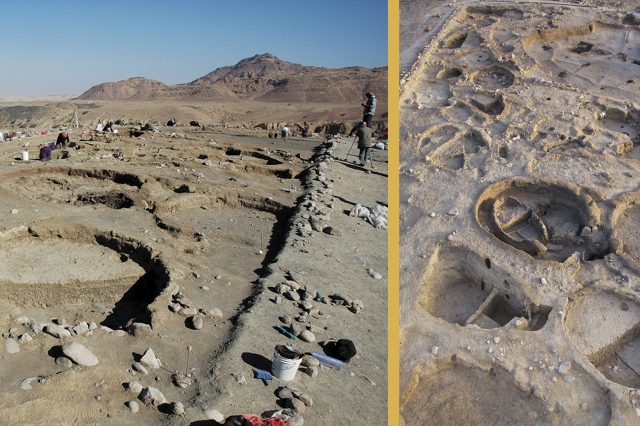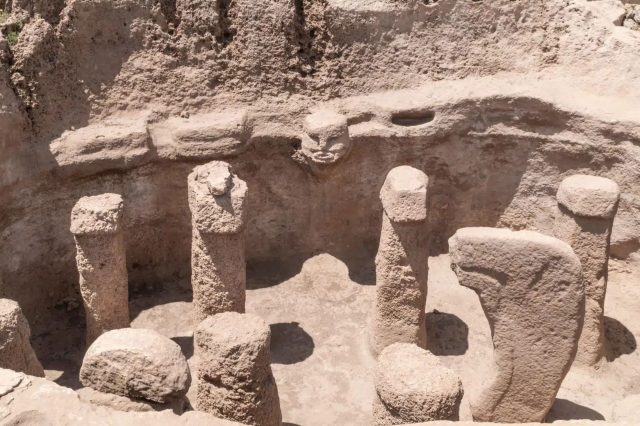There is nothing like it anywhere. Nothing found to date compares to Göbekli Tepe. It's ancient, It's massive. It's unique.
There are various considerations why Göbekli Tepe is a history-changing site. Here are three reasons I think Göbekli Tepe is unlike any other ancient monument we’ve found.
More than 12,000 years ago, when history as we know it was not even written, hunter-gatherers roamed the planet in search of food. History tells us that there were no developed societies during this specific period. These people hunted what they could and gathered food from different sources to survive. History books tell us that they did not remain in one location long and were essentially nomads that traveled searching for food and shelter.
Challenging history
Settlements were still not built, at least not in a traditional sense, and certainly not on a year-long basis. However, an ancient site in present-day Turkey called Göbekli Tepe challenges this view and offers conclusive evidence that 12,00 years ago, there were already developed societies on Earth. Built sometime during the 10th millennium BC, Göbekli Tepe is a monument unlike any other we’ve ever discovered.
Even though the site has been excavated since 1996, archaeologists have barely scraped its surface, and no more than 5% of the site was excavated. Nonetheless, we know that the site is massive; geological surveys of the area have revealed that Göbekli Tepe is home to at least 30 circles and over 200 stone pillars. Each of these pillars is truly massive; it weighs over 10 tons and is carved to a height of 6 meters. The massive stones were fitted into sockets hewn out of the local bedrock.
Why Göbekli Tepe is so important
Göbekli Tepe offers evidence that already 12,000 years ago, people could construct multi-ton monuments. And Göbekli Tepe is a massive monument. In terms of age and size, nothing in the world can compare to it. The site is not just a random structure; it shows complex organization and arrangement evidence. It means that the builders did not erect the site randomly and that it was planned and built carefully. This speaks of its importance.
A massive, well-organized complex
The complex is massive and organized and must have been built for years or possibly decades. Remember, this was 12,000 years ago, and the people who quarried, transported, and placed the multi-ton stones into position had no more than basic tools. This is why many archaeologists agree that Göbekli Tepe changes it all. The people who constructed it were more than hunter-gatherers. You don’t go on to build something like Göbekli Tepe, with such great care, with a society that lives on a day-to-day basis.
Although archaeological excavations at the site have not revealed any evidence of residential structures, I believe it is only a matter of time before we come across a settlement not far from Göbekli Tepe. It has been estimated that between 500 and 1000 people were needed to quarry, transport, and position the multi-ton stones at the site. If this was the case, whoever was in charge of the construction process must have provided the builders with food, shelter, and clothing.
It wasn’t built in a matter of years
Since Göbekli Tepe was not built in months or years, the people surely founded a settlement nearby where the builders were cared for. If it existed, this settlement was not small and most likely accommodated somewhere between 2,000 and 4,000 people. Furthermore, this society must have been organized. A hierarchy was likely in place, where people were tasked with different work. Some likely workers specifically quarried the stone, those that transported it, and then some raised the stones.
Intricately decorated
Another important detail we must not forget is that many of the pillars at Göbekli Tepe are intricately decorated, depicting various animals, symbols, and humanoid figurines. This tells us that the society that built Göbekli Tepe had artists in their community. This, in turn, means that these artists likely showed off their art on other, much smaller objects that they crafted throughout their life. Suppose we come across a settlement where the builders of Göbekli Tepe lived.
In that case, we will most likely come across those artifacts, probably made of different materials that depict some of the symbols and illustrations we see today at Göbekli Tepe. That’s one way we can help identify the society that built Göbekli Tepe because the symbols on the pillars were important to them.
1. It’s older than old
The first reason why I think Göbekli Tepe is the most unique monument on Earth, and there’s nothing like it around, is because of its age. No other ancient monuments on Earth show the degree of complexity, workmanship, and artistry as Göbekli Tepe.
Most importantly, this was achieved around 12,000 years ago when history books indicate that people living on Earth were still underdeveloped societies. Göbekli Tepe proves them wrong and shows that ancient cultures were already capable of constructing multi-ton monuments.
2. A construction project of unseen proportions
Göbekli Tepe is extremely ancient. Many material and human resources were needed to build such a massive site. This was done, supposedly, by no more than hunters gather societies. The thing is, these “hunter-gatherer” societies built a monument of unseen proportions. Göbekli Tepe is so impressive that we can almost compare it to the pyramids of Egypt, perhaps not in the amount of stone used, but in its complexity.
Thousands of years would pass after Göbekli Tepe until humankind built something of similar proportions. It is noteworthy to remember that some of the most impressive monuments on Earth were erected when people had already developed agriculture and certain technologies. Göbekli Tepe is so old that it predates pottery, metallurgy, and the invention of writing or the wheel.
So, how did such “rudimentary” societies manage to quarry, transporting, and raise into position blocks of stone weighing 10 and 20 tons? One stone pillar at Göbekli Tepe—still in its quarry—has an estimated weight of 50 tons.
3. Advanced society, 12,000 years ago
No, I’m not saying aliens and lasers. But we know that the society that built Göbekli Tepe was not rudimentary. Although we can’t possibly know much about them now, we do know that they must have been very, very organized. The degree of their organization is debatable, but to build something of the size of Göbekli Tepe speaks for itself.
The more we explore the site, the more we are left awestruck by it. We know that the entire complex was not built randomly and that certain patterns are embedded within the structures. Researchers only recently found one such pattern.
A study published in the Cambridge Archaeological Journal reveals that Göbekli Tepe’s builders knew geometric principles 12,000 years ago. Some of the stone circles that were analyzed at the site (the oldest) show hidden geometric patterns: the builders incorporated shapes such as equilateral triangles when they built the stone circles and positioned the stone pillars. This tells us that the architects of Göbekli Tepe had knowledge of geometry even before it was officially “even invented.”
Join the discussion and participate in awesome giveaways in our mobile Telegram group. Join Curiosmos on Telegram Today. t.me/Curiosmos





